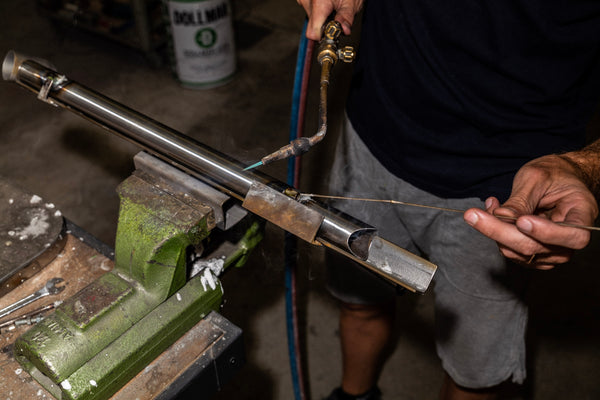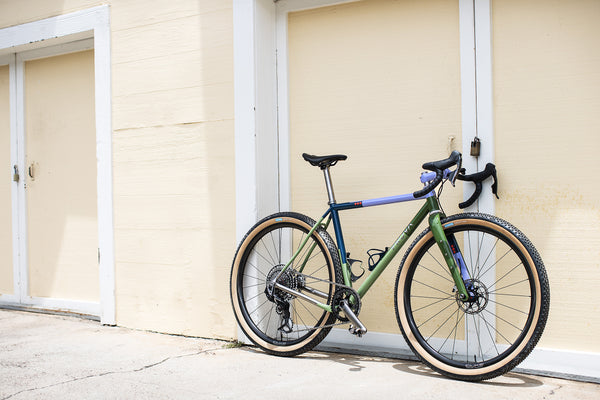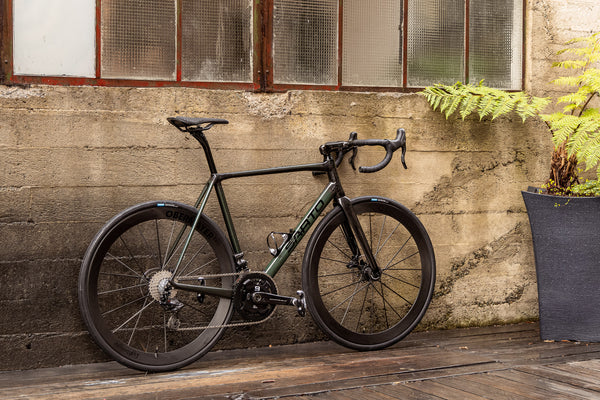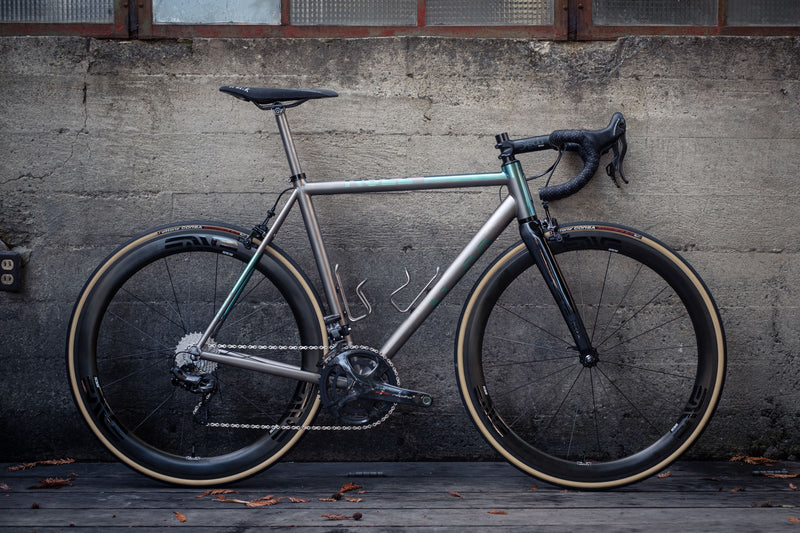"It's an iteration, an evolution. I think that's the way to think of it," explains No. 22’s co-founder Bryce Gracey during a video call to discuss the brand's all-new Aurora. And on the face of it, he's right. The release even looks like bike business as usual: new season, new things. But in typical No. 22 style, Bryce is underplaying its significance - for No. 22 and the wider industry. Because the new Aurora is not so much an evolution but a seismic shift in how bikes - titanium ones, at least - are designed and built.
With his thoughtful, measured delivery, talking to Bryce through a screen feels like meeting across a table. It's very pleasant. Although there is a sizeable 3D-printed elephant in the virtual room that needs to be addressed. You see, the Aurora isn't just a slew of new updates polished to a gleam; it's an exercise in the creative application of some seriously esoteric 3D printing technologies. "We've always made small iterative changes to our models as we saw appropriate or fit from a performance standpoint. We've done that from the start," he says. "And as new technologies avail themselves to us, such as 3D printing, we assess them to see how they can help make the product even better."

For the new Aurora, that means a titanium 3D-printed seat mast topper, dropouts with integral disc brake barrels, and a beautifully sculpted stem that sits as the centrepiece of a fully integrated cockpit system. But the real innovation is inside, as Bryce explains. "3D printing isn't just a new way of making things; it's a medium for creating radically complex structures that were previously impossible to realize. For example, the Aurora's new dropouts feature a lattice profile that's generative based on the loads that are going through that piece. They're not hollow; the best analogy would be how the internal structures of bones work."
And if that isn't justification enough for 3D printing the dropouts, Bryce has a few more reasons up his sleeve. "My partner Mike did a comprehensive podcast with Bike Rumor about this which is well worth a listen," he notes. "But essentially, the new dropout design allows us to overcome the largest challenges of the flat-mount brake mounting on titanium construction and fuse the bosses with the dropouts into a singular piece."
To appreciate why that matters, consider the non-3D-printed approach. Welding the two flat-mount brake barrels up onto a chain stay creates a lot of heat and deformation. With experience, titanium experts like No. 22 can predict how the material will act and then hope it behaves. But as Bryce points out, sometimes it doesn't. So by 3D-printing the brake mounts as integral parts of the dropouts, all that finicky work and variability gets taken out of the system.

The good news for No. 22's customers is that all the brand's disc models will now come equipped with the new dropout system. But for now, the new 3D-printed seat topper is destined only for the Aurora, and its gravel sibling, Drifter X. "The primary structure is essentially a cylindrical tube that sits over the extended seat tube itself," says Bryce of the topper. "And the connection, which is essentially the structural element, acts as almost a cantilever to where the saddle interfaces. That area between the tube and the saddle hardware interface is latticed, like the dropouts, to respond to the load." Given the variability of rider weight and power, ensuring this part gets the balance right between strength and weight is critical. For that reason, No. 22 heat treats all of its 3D parts. "Mike covers a lot of this in the podcast, but heat treating gets you to 99.5% of the strength of an actual solid billet of material when you do the treatment after the 3D printing," he adds. "And that's done at the Rolls Royce jet engine factory here in the States. The process amalgamates and homogenizes the material, removing any imperfections or gaps, which dramatically increases the strength and fatigue of the system dramatically."

Our conversation turns to the 3D-printed integrated stem - for now, another Aurora-exclusive part. Integrated cockpits are pretty common these days, but elegant design solutions that balance function and design are few and far between. And titanium ones are even rarer; something Bryce is keenly aware of. "I think one of the things that we strive at, given that I come from an architecture background, is the gestalt or the whole package of a bicycle," he muses. "Because that's essentially what architecture is; a bunch of miscellaneous parts coming together to form a cohesive design and concept. And that's how we treat the bicycles."
Cohesive it is, and so very svelte. And when you look closely and move past the emotional response the stem evokes, the sheer thought behind the design comes into focus. "We integrated the cups into the design of our head tube, so it's not superfluous," he says. "It doesn't go from titanium to an alloy cup, plastic spacer, carbon, or whatever. It's all titanium all the way through. So there's a cohesiveness in the material. And design-wise, we created everything: the spacers, the dust cap of the headset - all titanium. We're quite satisfied with how it looks." And if you haven't learned by now, that's No. 22-speak for, we're stoked, but we'll keep tweaking.

Eagle-eyed No. 22 watchers might also notice something else that's new on the Aurora, a certain color pop that comes courtesy of the brand’s new Cerakote frame treatment. "We've always been interested in expressing the inherent beauty of titanium, whether it's raw, unpolished or anodized," he says. With an anodized titanium frame, there's no pigment applied like there is on aluminium; it's all a refractive light process. Now, if we painted our bikes for aesthetic purposes, it would beat down the beauty of the anodizing because it changes the way the light hits. And with paint, you need a clear coat, so if you try to match up anodized titanium with the paint, you have a ledge because the paint is way thicker than anodizing. Plus, it flakes at the joins."
But as Bryce explains, Cerakote is 1/20th the weight of paint, with very little height differential when it's mated up to anodized areas of the frame. And because it's a ceramic coating, it doesn't require the same clear coat treatment as paint, preserving the natural beauty of the anodized titanium in the process. "We've been pretty specific about the colors we want to work with," he says. "And we're pretty impressed with those. So expect to see some fun stuff coming out soon!"









Back to Journal